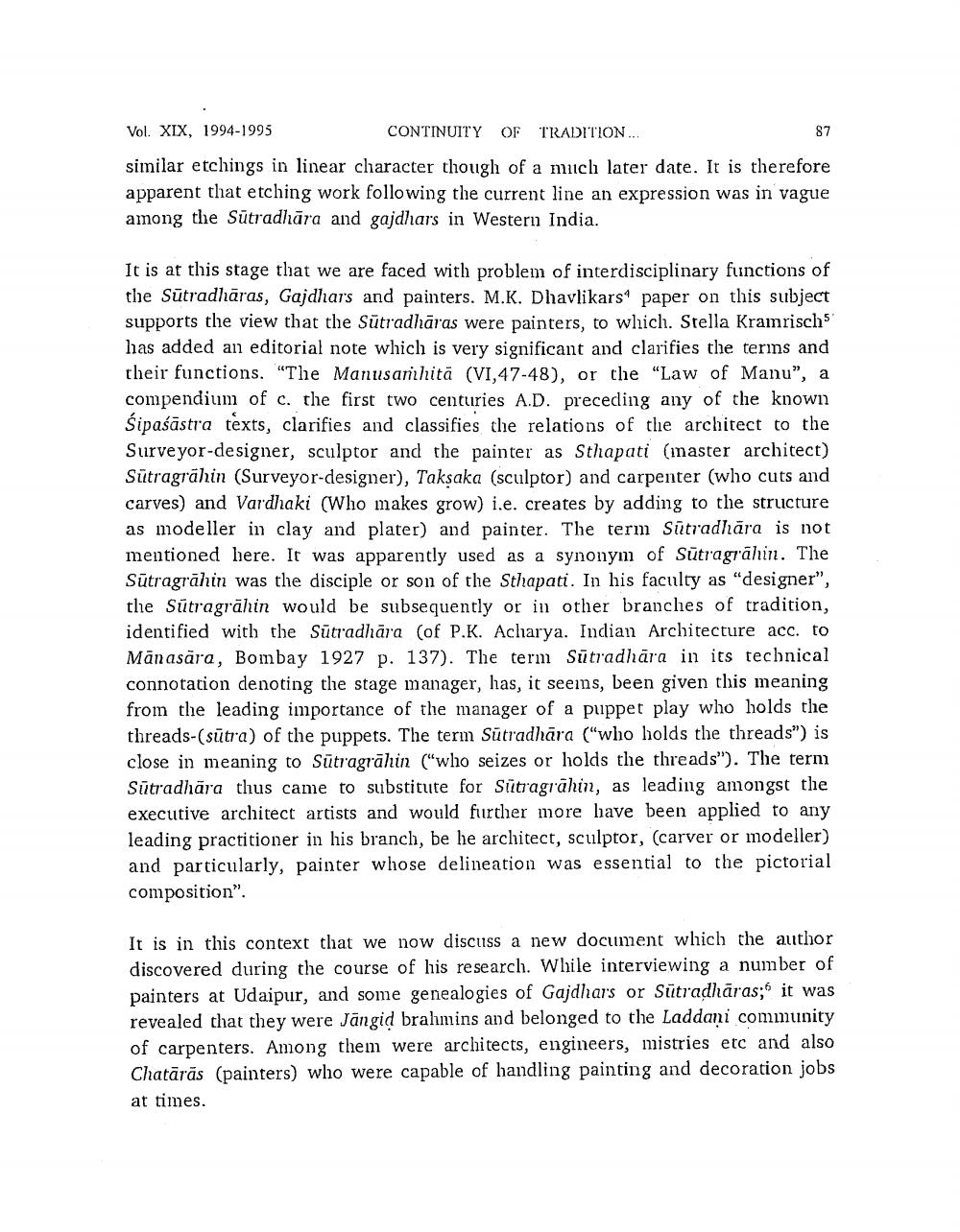________________
Vol. XIX, 1994-1995 CONTINUITY OF TRADITION...
87 similar etchings in linear character though of a much later date. It is therefore apparent that etching work following the current line an expression was in vague among the Sūtradhāra and gajdhars in Western India.
It is at this stage that we are faced with problem of interdisciplinary functions of the Sūtradhāras, Gajdhars and painters. M.K. Dhavlikars" paper on this subject supports the view that the Sütradhāras were painters, to which. Stella Kramrisch has added an editorial note which is very significant and clarifies the terms and their functions. "The Manusarhitä (VI,47-48), or the "Law of Manu", a compendium of c. the first two centuries A.D. preceding any of the known Śipaśāstra texts, clarifies and classifies the relations of the architect to the Surveyor-designer, sculptor and the painter as Sthapati (inaster architect) Sūtragrāhin (Surveyor-designer), Taksaka (sculptor) and carpenter (who cuts and carves) and Vardhaki (Who makes grow) i.e. creates by adding to the structure as modeller in clay and plater) and painter. The term Sūtradhāra is not mentioned here. It was apparently used as a synonym of Sūtragrāhin. The Sūtragrāhin was the disciple or son of the Sthapati. In his faculty as "designer", the Sütragrāhin would be subsequently or in other branches of tradition, identified with the Sūtradhāra (of P.K. Acharya. Indian Architecture acc. to Mānasāra, Bombay 1927 p. 137). The term Sūtradhāra in its technical connotation denoting the stage manager, has, it seems, been given this meaning from the leading importance of the manager of a puppet play who holds the threads-(sūtra) of the puppets. The term Sūtradhāra (“who holds the threads”) is close in meaning to Sūtragrāhin (“who seizes or holds the threads”). The term Sūtradhāra thus came to substitute for Sūtragrāhin, as leading amongst the executive architect artists and would further more have been applied to any leading practitioner in his branch, be he architect, sculptor, (carver or modeller) and particularly, painter whose delineation was essential to the pictorial composition".
It is in this context that we now discuss a new document which the author discovered during the course of his research. While interviewing a number of painters at Udaipur, and some genealogies of Gajdhars or Sütradhāras; it was revealed that they were Jāngid brahmins and belonged to the Laddani community of carpenters. Among them were architects, engineers, mistries etc and also Chatārās (painters) who were capable of handling painting and decoration jobs at times.




